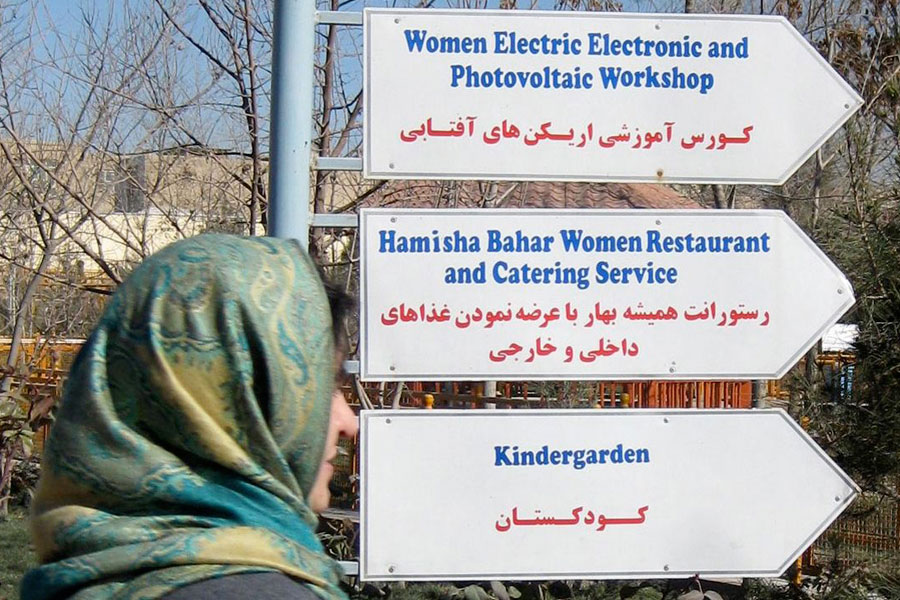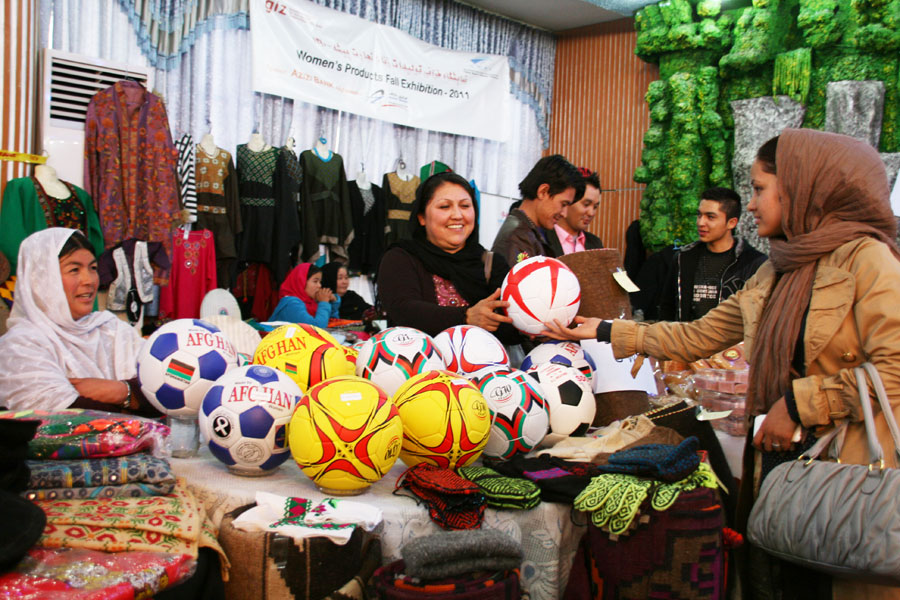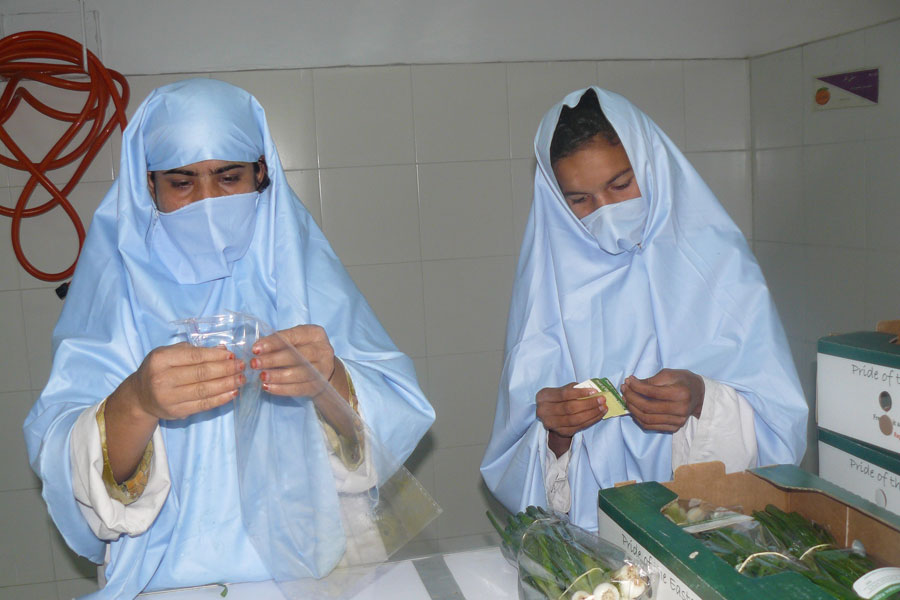DEVELOPMENTS
Economic Empowerment Strategies for Afghan Women
Aug 27, 2014
It was just a generation ago that many women in Afghanistan thrived in academia and the professional workplace. Their standing in society, like that of less privileged Afghan women, has since been destroyed.
After taking over the country in 1996, the Taliban banned women from working, attending school, even showing their face in public. These years of overwhelming oppression transformed the country and changed how Afghan society sees women, and how Afghan women see themselves.

If we are to help change things back, it makes sense to start with restoring women’s opportunities in Afghanistan’s economy. DAI was recently asked by the U.S. Agency for International Development (USAID) to recommend ways to promote sustainable income generation for Afghan women. Under our Afghanistan Small and Medium Enterprise Development activity, we looked at economic empowerment across key sectors: business and skills development, trade, gender, information and communication technology (ICT), and finance.
Our team interviewed small groups of women business owners, visited Afghan businesses that were women-owned or employed women, and observed the start-ups of three pilot projects. We interviewed 80 stakeholders from government, business, entrepreneurial support services, media, financial institutions, mobile network operators, and the international donor community, with a focus on Kabul and its linkages to outlying areas.
For Afghan women to rejoin the economic mainstream, they need education, skills, and self-confidence. But no individual woman can succeed in a vacuum. Her family must support her going to school and work, her community must give her a place to work, and her country must provide the legal framework, institutions, and ministries that support women’s economic inclusion.
Creating A Culture Of Confidence
The challenges Afghan women face require a strategically conceived and multifaceted response. To be economically empowered, a woman needs increased confidence as well as an enabling environment that promotes her success.

Access to training or skill development is certainly an important part of this context, but let us consider Afghanistan’s recent economic progress through a different lens, one that looks anew at key components of the country’s business environment and considers how these segments can be shaped to work for women. We need to look at market opportunities and position women to achieve in this sphere. There are new opportunities in modern Afghanistan, but women need support to grasp them.
The international trade arena, for example, provides a market that is gender-neutral if women can access it. To facilitate this access, we might promote industrial zones that offer a safe place for women employees and a production and sales venue for women business owners.
Achieving this paradigm shift in women’s status will mean seizing these “quick wins” as the situation allows, but we must also begin to develop the evidence that it benefits everyone to help women engage in the productive economy in a safe and culturally appropriate way.
Role Models Abound: Tell Their Stories
Our team made more than 30 recommendations for USAID to empower Afghan women—interventions ranging from market access to finance to skills development and beyond. But a foundational step is simply to get women to imagine the possibilities.
Role models abound: women as farmers, as reliable employees, trade and service professionals, handicrafters, and business owners. Afghan women are serving in academia and politics. When we tell the stories of their contributions, we must be sure we are talking not just to women but to brothers, husbands, and fathers.
Even in Afghanistan, one of the world’s least developed countries, internet and mobile technology are available. Messages can reach even marginalized women and girls at home. If they know what is possible, anything can happen; if they don’t, nothing will.
Needed: Sex-Disaggregated Data, Analysis
Among the stories that can inspire and sustain change, stories of “wins” are the most powerful. But without hard data on where Afghan women have been and where they are now, their future successes will be merely anecdotal. If the Afghan government and donors can show in concrete terms that investing in women delivers results, it will be easier to generate support for women’s economic empowerment.
The Ministry of Women’s Affairs and the Central Statistics Office must have the capacity to build, analyze, and track gender statistics. In partnership with women’s advocacy groups, donors, and other government agencies, these bodies can collect and analyze the appropriate data. However, this basic gathering and managing of knowledge must be taken up by other ministries—it should not be segregated within a designated ministry—and integrated throughout the economic fabric of Afghan society. For example, the Ministry of Agriculture could gather data on whether agricultural extension services are reaching both women and men farmers.
Among the further recommendations we made to USAID:
Leverage Media and ICT
Since 2002, USAID has invested heavily in Afghanistan’s communications infrastructure, establishing 75 television stations and more than 175 radio stations. The agency has worked with private sector operators to increase the area and population covered by mobile networks, and continues to support improved internet connectivity. In fact, 79 percent of households in the Kabul region now own a radio and 69 percent have a television, according to a 2011 Asia Foundation survey.
Radio programming can highlight women in business from the local to national level, introducing the role models that challenge stereotypes. It can also help describe the benefit of women’s economic empowerment to families and communities.

Afghan media organizations are now capable of producing localized content that can address women’s issues in socially appropriate ways, whether highlighting the accomplishments of women leaders in news programming or developing non-threatening storylines for Afghan TV serials.
Social media provide an increasingly promising outlet for literate women as 3G services are introduced that provide internet access via mobile phone or USB modem. Over time, SMS-based social networking now in the pilot phase will be adopted by more users.
According to the sex-disaggregated Altai Media report of 2010, 70 percent of women in Kabul own a mobile phone—and women are already using mobile-based social media. While many are participating under male pseudonyms for anonymity and security, the content of their group discussions indicates they are debating the challenges they face as women and beginning to build support networks.
For women, ICTs also provide opportunities for connecting to the market and each other, opening new opportunities for them in business.
Develop Focused Content
The typical Afghan woman has limited access to information. Those confined to home rely on the men of the household to relay information. Those who enjoy more mobility are often still limited in their information sources. For example, many women are not allowed to frequent internet cafes that are often associated with young men accessing inappropriate websites. Women’s participation in development programs is subject to the approval of husbands or fathers concerned that training might introduce morally questionable ideas or invite judgment on a household.
Improving women’s physical access to ICTs and developing content responsive to women’s needs will increase access to opportunity. Women’s internet access can be improved by supporting women’s internet cafes or kiosks in existing women’s venues. And as mobile network operators introduce 3G services, women who can afford higher-end handsets will be able to access information through mobile network data plans. With reduced rates—like those Etisalat currently offers to female SIM card owners for voice calls—access to valuable content would be increased. Expanded internet access will enable women to locate job and training opportunities, view images to generate ideas for product design, communicate with mentors, develop market linkages, conduct business communications, provide remote services, and so on. It will also spur the creation of web and mobile content responsive to Afghan women’s needs.
Afghan-language internet offerings are already proliferating, and as donors and the development community participate in this growth, women’s needs must be considered. In 2006 there were just over 500 websites with the .af country code domain. By the end of 2011, there were 6,525. For women accessing information through basic mobile phones, there are ways to provide relevant information through targeted SMS messaging, educational mobile games, and interactive voice response applications.
Educate Women To Meet Market Needs
A well educated population is crucial to a competitive economy. If we are looking to empower women at the livelihood, employee, and entrepreneur levels, we must invest in education and skills development for these groups at the point where they enter the market—literacy, numeracy, vocational, and professional training at a minimum.
A holistic approach to skills development is essential, considering market needs and linking women to markets, information, finance, and networks. Continuing to train women in handicrafts when the market cannot absorb their skills, for example, is not educating women with a purpose. Training handicrafters to regain market share, however, would teach them how to meet quality standards, use appropriate material for each market, and design, package, and label in a way that targets market needs.
Create Networks Of Women In Business
Women are typically excluded from men’s formal and informal business networks, and existing women’s associations do not function as businesses, provide necessary information, or support business linkages.
There are 86 women’s associations in Kabul and 125 throughout the country, many of which focus on handicrafts. Yet rather than working together to advocate in organizations such as chambers of commerce, or support each other, these poorly managed groups do not network, focusing instead on activities such as handicraft training and livelihoods rather than strategic cooperation and information sharing.
These organizations should be run like businesses and serve their members’ needs. Significant investment has been made by donors in some organizations, which need to be pushed, with assistance, to build sustainable models with membership fees and income-generating services.
In addition, women need entry into existing commercially oriented organizations to learn firsthand about markets, sectors, and industries. It will also be important to develop women’s sections within key commercial organizations such as the Afghan Chamber of Commerce and Industry, the Afghanistan Investment Support Agency, and the Export Promotion Agency of Afghanistan that can provide business information to women’s business organizations.
Empower The Provinces
It is not surprising that Kabul and larger urban areas lead the way in economic empowerment, due to the concentration of commerce and their exposure to international trade. But an effective economic empowerment strategy must connect the capital to the provinces in a holistic manner, linking business networks, academia, and sectoral support across the country and building up existing associations and networks.
Many of the larger businesses in Kabul are already working with women in the provinces and would source additional staff from the provinces if these women were trained or had the benefit of more experience.
A Hard But Viable Road Ahead
While insecurity, a lack of infrastructure, and weak business-supporting policies and services hinder all legitimate economic growth in Afghanistan, Afghan women face unique challenges in engaging in their country’s economy. Access to finance, for example, is often an impediment to starting and growing any business in Afghanistan, but Afghan women have even less access to startup capital and equity than their male counterparts. They struggle to meet collateral requirements for loans or to raise investment capital, resulting in a “missing middle” of women business entrepreneurs.
The obstacles to women’s economic empowerment are considerable—but given a strategically conceived and multifaceted approach, they are not insurmountable. We will need to articulate the existing successes of Afghan women, share their examples with the women and men who set the tone for Afghan culture, seize the “quick wins” that demonstrate progress, quantify that progress through credible data, provide the training and education needed to succeed in the economy, and enable women—technically and socially—to network together to consolidate their gains.